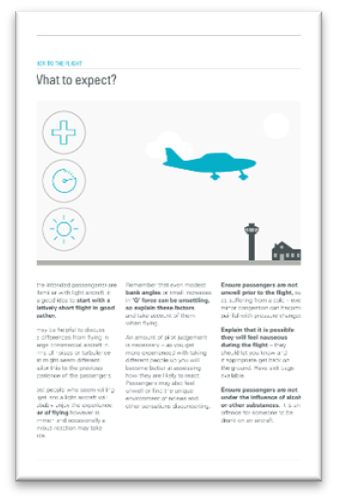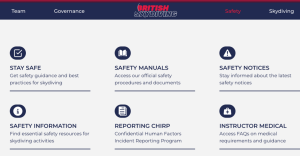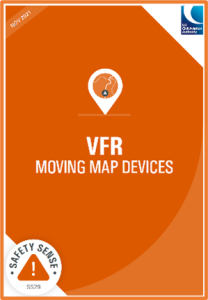How a mis-labelled graph and a heavy take-off became an early lesson in safety, instinct and shared experience. Reproduced with kind permission from 22 Group RAF Air Safety.
Having been in the RAF for 18 years, I’ve been fortunate to fly many aircraft – each of which have added to my overall experience base. Now I seek to draw upon my experience and knowledge to add to the safety of those flying today, via my air safety role.
My flying experience started prior to the RAF, as a very keen but inexperienced private pilot, flying a Cessna 172 from the grass of Redhill aerodrome, near to Gatwick. I’d completed my PPL in the minimum hours and now wanted to take my family flying (given this is a safety “dit” – you can likely already sense that some cheese-holes are shortly to align!) I was 17 and had decided to take my Mum, Dad and Sister for a lunch-away to Bembridge, on the Isle of Wight.
With four of us and the requisite fuel, my take-off weight would be far greater than I’d experienced before. Recognising this, I chatted with the instructor who’d trained me – I also asked them to check my weight and balance calculations, especially given my own had identified that I would be operating the aircraft within (or so I thought) but close to the limits of the aircraft operating envelope. They checked and confirmed all was good (or so they thought). They also chatted me through flying the aircraft at heavier weights.
In what to experienced aviation professionals reading this may seem noddy stuff, at 17 years old and with very limited experience, any advice was gratefully received! They recommended I use every inch of the grass runway and hold the aircraft against the toe brakes on full power for a few seconds before release, to help with acceleration. They described how the aircraft would feel slower to accelerate but that that was normal and to be expected at those weights and that it would of course take more of the runway to get up to take-off speed (we’d performed take off distance available calculations and all appeared fine). All simple stuff but a picture was building in my mind – for it to seem different to what I had previously experienced and my goodness it was!
Sat right at the top of the runway, take-off clearance received, full power set against the toe brakes – all was ok so far. Brakes off and I started bounding down the runway, gently bouncing up and down with small undulations from the grass runway bumps – feeling a bit like what you see on a WW2 Spitfire film for the take-off roll; though in a distinctly less cool aircraft! The speed was building, though not rapidly – my initial thoughts; that’s ok, it’s in line with what I expected and had been briefed and all the calculations proved it was close to limits but within and therefore “ok”.
There was no formal V1 point of rejection for the take-off etc – not then for my Cessna PPL flight. I was using up available runway, but my acceleration was not great – I just didn’t have the experience to fully appreciate it at that split second, though I would learn a lot about flying within the minute that followed! Soon after, despite my inexperience, it became apparent that I didn’t have enough speed to take-off, nor enough runway left to stop (not a scenario I recommend you ever find yourself in!). I had two choices; try and stop, (without enough runway left to fully stop, the aircraft fully fuelled and thus heavy, high aircraft momentum, less than amazing braking performance on grass and a large hedge at the airfield boundary) or make something work and continue.
Whilst inexperienced, the instant outside visual picture meant I knew I’d impact the hedge before stopping if I tried – yes, it would be slower but a crash for certain (with risk of fire, being trapped etc). The other option, which I took, was to make the take-off work, somehow! I was willing the speed to increase but to a degree, at this point, I had temporarily become an unwilling passenger! I had to visually assess when to rotate, prior to the correct rotate speed or I’d hit the hedge at high speed, with my family onboard also. I made my assessment of the last credible point to attempt rotating and limped the aircraft into the air – but it wasn’t over yet! The stall warner started to go, then the aircraft started turning left (not from any control input of mine though).
I balanced the below optimum (my polite understatement) airspeed; not pulling back on the control column to the degree I’d cause a full stall – balancing it all so that I had enough speed to stay airborne (just – not in the position I’d want to be on the drag curve!) but not going for optimum speed or I’d impact the obstructions/ground. As the aircraft started to gently turn to the left of its own accord, I remembered a mere passing comment my instructor had mentioned – if you ever get the aircraft turning close to the ground and it’s not you doing it, it may be the incipient stall – don’t turn out of it or you’ll likely deepen it towards or to the full stall. I instantly remembered this gem of a comment and just kept with the (very) low level gentle turn!
Gradually, the situation improved. I built the aircraft speed to normal parameters and climbed away. I had a quiet think – I didn’t know exactly why it had happened but it certainly was not good. But now what? With the aircraft now flying normally, I decided that to then return to Redhill would only mean me landing whilst heavy on a short grass strip, compounding the less than optimum flight so far with an unnecessary risk…so, to Bembridge we went.
On the plus side, our lunch was lovely! I spoke to Redhill by phone from Bembridge – it had certainly raised the attention of ATC at Redhill, who criticised themselves for not pre-emptively pushing their crash alarm, as they described that from what they saw on take-off, they were very surprised it didn’t end in a crash.
I also spoke with the flying school – it took a good while to ascertain what had happened; especially as I’d checked all the figures during the planning process with my previous instructor and the Chief Flying Instructor. They retrieved the documents and re-ran calculations – then a startling admission from the Operations personnel; they’d realised that they’d incorrectly labelled several of another aircraft type’s weight-and-balance / performance graphs as the Cessna 172 I’d planned the trip against and flew! There had been no way of either me or the two instructors realising that during the planning process, as the information was presented in an identical fashion – the only way of knowing was the aircraft label on the top, which Ops had applied with a ticker tape strip, stating the registration for the aircraft I was flying, when it wasn’t. Something so simple nearly had fatal consequences. Had I not been operating the aircraft close to the limits, that error wouldn’t likely have mattered for my or other flights for a long time beyond to come.
For me, there were several obvious take-aways; Ops had made a genuine honest mistake and could certainly tighten that labelling process but had that not occurred, the aircraft wouldn’t have ended up in that position, as the fact the weight and balance was not in limits would have been apparent at the planning phase (had the graphs in fact been those for the Cessna 172!). Had my instructor not said that if low to the ground and the aircraft turns and you’re not doing it, don’t try and level the turn – then I may well have, with disastrous consequences. Had I decided earlier that the aircraft acceleration on the ground was insufficient, I would have aborted the take-off before being faced with the option of hitting a hedge or limping into the air with my fingers crossed, using every bit of flying ability I could muster – though my experience then was low.
With many people reading this being aviation professionals, it is easy to apply our collective thought processes and training to this. At 17, I was a keen PPL pilot, not a highly trained military pilot. So, why have I chosen to write about this from before my military flying career? Because there are useful take-aways from it for all aviators. I’ll list my own immediate thoughts below but it’s far from an exhaustive list:
- If it feels wrong, it may well be – use your training but also trust your instincts and experience. It’s better to be on the ground wishing you are in the air than in the air wishing you are on the ground.
- Talk about your experiences and the expertise you have, especially to those less experienced. A “dit” spun to people whilst having a coffee, a presentation, or a passing comment of useful information about something you’ve previously learnt from could be critical to someone in their future, without you or them realising it at that time.
- Be willing to learn from others’ experiences – so much of policy, rules and regulations are borne out of previous incidents and accidents. You may not know the full background as to why a rule exists, but they’re not put in for the fun of it.
- Something may seem small, but errors can have disastrous consequences – if you notice something wrong, speak up. It may seem something small but the effect otherwise later on may be large.
- If it does start to go wrong, remember the basics – Aviate, Navigate, Communicate; fly the aircraft safely first as the priority.








